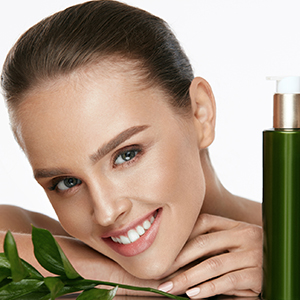Our beauty team is full speed ahead, beginning research on one of the most talked-about beauty topics of the moment – natural personal care. The new edition of our study, Natural Personal Care: U.S. Market Analysis and Consumer Insights, will take a deep dive into the dynamic United States market and seek to understand the various triggers and influencers of a purchase decision as well as unmet needs of consumers through a dedicated Consumer Insights chapter. The report’s project manager, Naira Aslanian, shares some insight on our analysis:
What are some of the key topics covered in this edition?
The report attempts to provide an in-depth understanding of the market, giving subscribers the following:
- The fastest-growing natural personal care brands in each category and their drivers.
- Certifications and labeling that consumers look for.
- Key factors that would help users of non-natural products convert to naturally positioned brands and products.
- Brands that receive the highest rating in our proprietary ingredient analysis.
- Key consumer trends and behaviors in terms of preference for degree of naturalness of a product and channels to shop for products.
We all know that there are brands with varying degrees of naturalness in the market. How are these segmented and analyzed in Kline’s report?
The natural personal care market is divided into truly natural versus natural-inspired, based on their degree of naturalness. Truly natural brands come to the forefront as the clear winners in the market, growing double the size of the natural-inspired ones.
In our analysis, each brand is then rated on a scale of 1 to 10, with 1 being highly synthetic and 10 being completely natural or organic. We use our own proprietary Natural Rating System developed by our specialty chemicals team, which examines the ingredients in approximately 10-12 products of each brand.
How is the retailing landscape evolving?
An increasing number of retailers are expected to allocate shelf space to more naturally positioned brands. We already see specialty retailers such as Sephora putting a “clean” label on brands that are positioned as natural. Mass retailers are also placing emphasis on the importance of “clean” and natural products. In fall 2017, Walgreens introduced a naturally positioned color cosmetics line called Found, while CVS announced the removal of all parabens, phthalates, and formaldehyde donors in products within the CVS Health, Beauty 360, Essence of Beauty, Promise Organic, and Blade store brand product lines.
Transparency is a key aspect that consumers are looking for in natural products. How are brands responding to this growing demand?
More and more brands are making improvements in their product’s packaging and labeling, helping consumers to better understand the true degree of naturalness and showcasing their commitment to clean and green beauty. Andalou Naturals has updated its packaging to reflect the percentage of naturally derived ingredients, and Yes To continues to benefit from its transparency of natural content.
In January 2018, CVS announced that it will stop retouching ads for beauty products and partner with L’Oréal, CoverGirl, and Coty on this endeavor. The retailer also announced the implementation of a CVS Beauty Mark on images that have not been materially altered. To coincide with this initiative, CVS launched its “Beauty in Real Life” campaign in April 2018, featuring untouched and unaltered photos of women wearing cosmetics.
Focusing on market size and growth, news-making imports, key new launches, product trends, and alternate channels, Kline’s new Natural Personal Care: U.S. Market Analysis and Consumer Insights report analyzes the dynamic market for naturally positioned, clean, and organic beauty and personal care products. Moreover, this edition attempts to take a deep dive into the minds of consumers to better understand their behaviors in terms of preference for the degree of naturalness of a product, channels to shop for products, and more.

